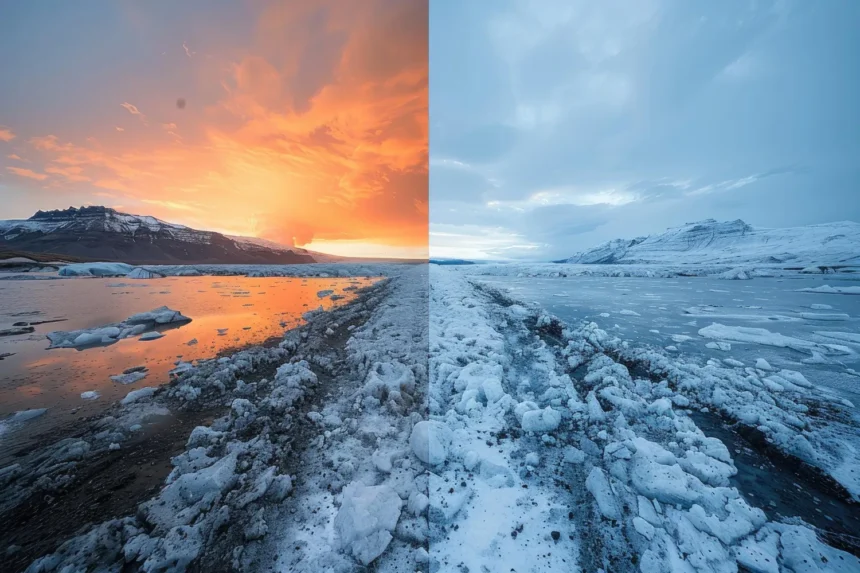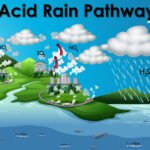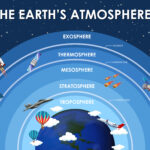Introduction
The year 2025 has become a defining moment in the story of our planet. We have crossed a new threshold, one that has seen the lost glaciers in 2025 become not just a scientific term but a pressing global concern. From the towering ice masses of the Alps to the ancient glaciers in Alaska and the Andes, more than a dozen iconic ice formations have vanished completely. These aren’t distant or isolated incidents; they’re interconnected signs of a warming Earth.
According to the World Glacier Monitoring Service, glacier retreat rates have more than doubled in the last 20 years. New data released in March 2025 shows that glacier loss is happening faster than climate models previously predicted. This isn’t just about ice; it’s about freshwater resources, rising sea levels, and the ecosystems that depend on glacial stability. As Americans, this matters to us. Glaciers in our national parks, such as those in Glacier National Park, Montana, are disappearing before our eyes. In this article, we explore what led to the lost glaciers in 2025, the science behind their disappearance, and what this means for our future.
Related: How are Glaciers Formed? A 4-Step Ultimate Guide
What Happened to the Glaciers in 2025?
Glaciers Lost in 2025: A Global Snapshot
The accelerated retreat and disappearance of glaciers worldwide are stark indicators of climate change’s impact. The list of lost glaciers in 2025 spans across continents and climate zones. Here are some of the most significant glaciers that disappeared entirely or are on the brink:

| Glacier Name | Location | Previous Volume (km³) | Current Volume (2025) | Status in 2025 |
|---|---|---|---|---|
| Okjökull Glacier | Iceland | 0.7 | 0.0 | Lost |
| Chacaltaya Glacier | Bolivia | 0.022 | 0.0 | Lost |
| Pizol Glacier | Switzerland | 0.05 | 0.0 | Lost |
| Jakobshavn Isbræ | Greenland | 150 | 97 | Rapidly retreating |
| Thwaites Glacier | Antarctica | 150 | Diminishing | Rapidly retreating |
| Kilimanjaro Glaciers | Tanzania | 0.011 | <0.001 | Near disappearance |
| Columbia Glacier | Alaska, USA | 25 | 12 | Rapidly retreating |
| Rhone Glacier | Switzerland | 0.5 | 0.3 | Retreating |
| Pasterze Glacier | Austria | 1.8 | 1.2 | Retreating |
| Sperry Glacier | Montana, USA | 0.2 | 0.08 | Disappearing |
Related: Iceland’s Shocking Loss: The Once-Mighty Okjökull Glacier That Vanished Overnight!
Notes:
- Okjökull Glacier: Declared dead in 2014, it was the first Icelandic glacier lost to climate change.
- Chacaltaya Glacier: Once a popular ski resort, it disappeared entirely by 2009.
- Pizol Glacier: Declared vanished in 2019, it was a symbol of the rapid glacial retreat in the Alps.
- Jakobshavn Isbræ: Greenland’s fastest-flowing glacier has retreated significantly, losing about 97 billion tons of ice between 1985 and 2022.
- Thwaites Glacier: Known as the “Doomsday Glacier,” its rapid melting poses significant risks for global sea-level rise.

Related: The Melting Crisis – The ‘Doomsday Glacier’
- Kilimanjaro Glaciers: Over 80% of the ice has melted since 1912, with projections indicating near-total loss by 2035.
- Columbia Glacier: One of the fastest-changing glaciers in Alaska, it has lost nearly half its volume since the 1980s.
- Rhone Glacier: Swiss glacier retreating rapidly; efforts include covering it with blankets to slow melting.
- Pasterze Glacier: Austria’s largest glacier has been retreating steadily, losing significant volume over recent decades.
- Sperry Glacier: Located in Glacier National Park, it has shrunk dramatically, reflecting broader trends in the region.
Related: Discover the Magical Glacial Lagoon of Iceland: 7 Reasons You Must Visit
Global Trends:
- European Glaciers: Since 2000, European glaciers have lost approximately 40% of their volume, with those in the Alps and Pyrenees being the most affected.
- Greenland Ice Sheet: Between 2002 and 2023, Greenland shed approximately 270 gigatons of ice per year, contributing significantly to global sea-level rise.
- Global Ice Loss: Since 1975, glaciers worldwide have lost over 9,000 gigatons of ice, equivalent to an ice block the size of Germany with a thickness of 25 meters.

The lost glaciers in 2025 represent a critical turning point. Not only are we losing natural history, but we’re also witnessing climate change impacting physical geography in real time. These examples underscore the urgent need for global action to mitigate climate change and preserve these critical components of our planet’s ecosystem.
Related: Climate Change and Greenland Glacial Melt – 5 Alarming Effects
Why Are Glaciers Melting So Fast?
Climate Change and Global Temperatures
The primary driver behind the melting of the glaciers is rising global temperatures due to human-induced climate change. The National Oceanic and Atmospheric Administration (NOAA) reported that 2024 was the hottest year on record globally, and early 2025 continued the trend with abnormal winter warmth.
Key factors include:
- Elevated greenhouse gas emissions (CO2, CH4, N2O)
- Industrial and transportation emissions
- Heatwaves in polar and alpine regions
“Glaciers act as sensitive indicators of climate change,” says Dr. Twila Moon, a leading glaciologist at the National Snow and Ice Data Center.
Related: Climate Change | 7 Alarming Effects and the Major Causes Behind
Reduced Snowfall and Increased Rainfall
Instead of snowpack, which helps preserve glaciers, many regions are now seeing winter rainfall. Without the insulation of snow, glaciers are more exposed to sunlight and heat, speeding up the melting process.
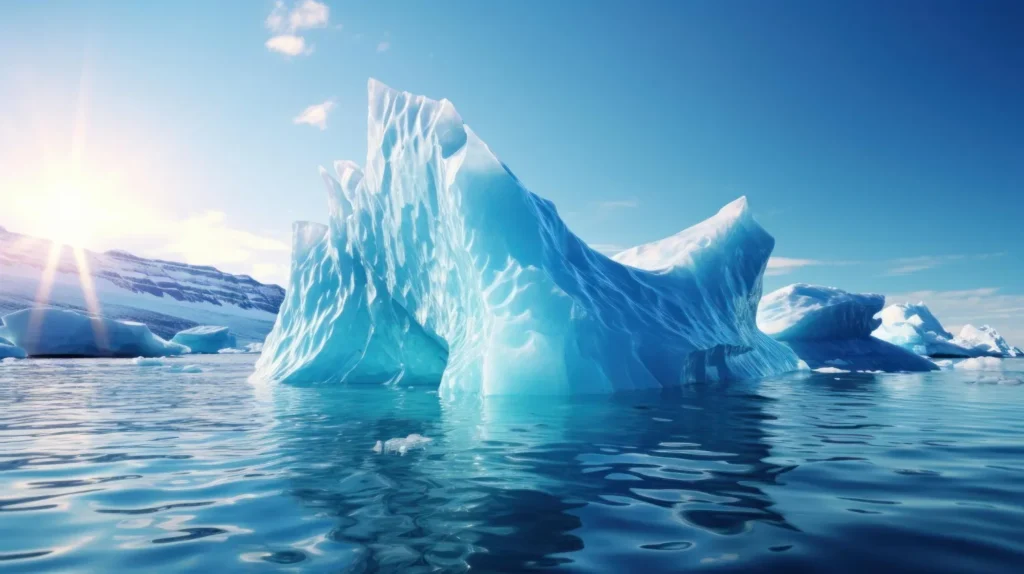
Soot and Pollution
Pollution particles like black carbon settle on glacier surfaces, reducing their albedo (reflectivity). This causes glaciers to absorb more heat and melt faster. This phenomenon has been well documented in the Himalayas and the Alps.
Related: Pollution – A Global Issue | 5 Major Effects of Pollution that Damaging Our Planet
Environmental and Societal Impact of Disappearing Glaciers
Water Scarcity
Glaciers are a major source of freshwater for millions of people. The loss of glaciers in 2025 means:
- Reduced water supply for agriculture in the western U.S.
- Disrupted seasonal flows in rivers like the Colorado River
- Challenges for hydropower generation
Read More: When Fossil Fuel Will Run Out? Can Fossil Fuels be Renewed?
Rising Sea Levels
Every glacier that melts contributes to global sea level rise. The Intergovernmental Panel on Climate Change (IPCC) warns that if glacial melt continues unchecked, we could see an additional 1 to 2 feet of sea level rise by 2100.
Read More: How Miami is Battling Sea-Level Rise Due to Climate Change: 6 Strong Strategies
Biodiversity at Risk
Disappearing glaciers are altering entire ecosystems:
- Cold-dependent species lose habitats
- Rivers become warmer and shallower
- Aquatic life faces oxygen depletion

Read More: Dark Oxygen Discovered below 10,000ft: An Oceanic Secret Revealed
Economic Consequences
Glacier-related tourism in national parks like Yosemite and Glacier National Park is declining. Communities reliant on these tourist economies are suffering.
Read More: 5 Alarming Threats to Thermal Pools at Yellowstone National Park from Tourists Throwing Coins
What This Means for Our Future
Are We Approaching a Tipping Point?
Many scientists agree that we may be near or past the tipping point for several glaciers. Once gone, they cannot be regenerated in any reasonable human timeframe.
Can We Still Save the Remaining Glaciers?
Yes, but time is short. The longer we delay, the more irreversible the damage becomes. The lost glaciers in 2025 serve as a stark warning of what lies ahead if we don’t change course. Many glaciers that still exist are rapidly retreating, and unless we take decisive action, they too will vanish. One of the most effective solutions lies in drastically reducing greenhouse gas emissions. This means accelerating the transition to renewable energy sources such as wind, solar, and hydroelectric power while phasing out fossil fuel dependence.
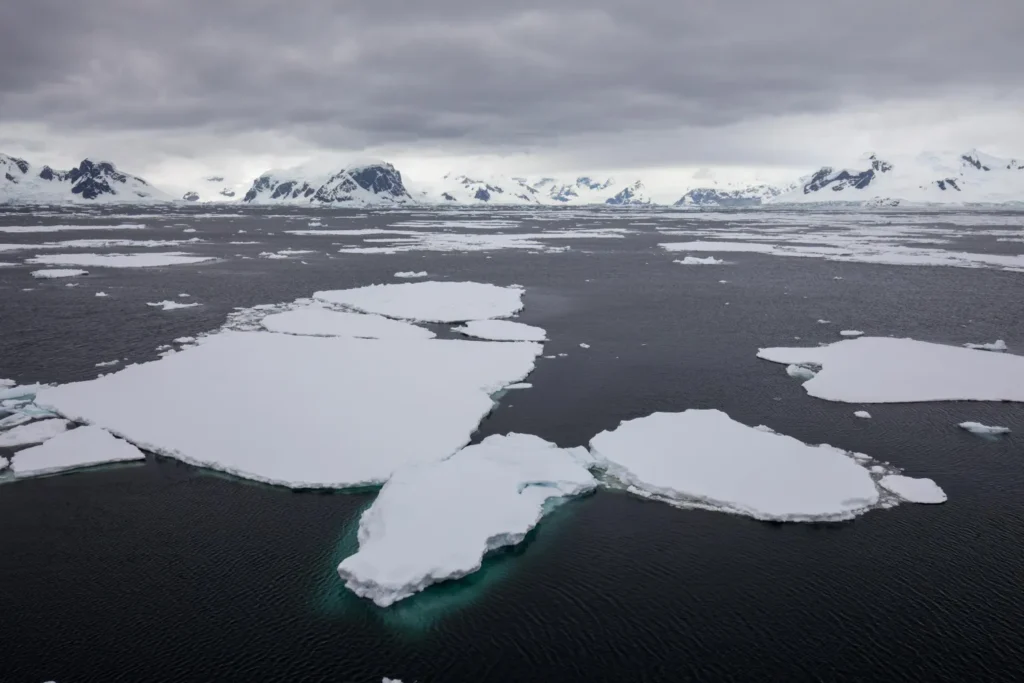
Strengthening international climate agreements, like the Paris Agreement, is also essential. Countries need to commit to deeper cuts in carbon emissions and be held accountable through transparent monitoring systems. Glaciological research plays a crucial role in this effort. Continued investment in satellite monitoring, field studies, and predictive modeling helps us understand how glaciers are responding to changing climate patterns in real time.
Read More: The Great Ocean Slowdown: How Melting Antarctic Ice Is Reshaping Our Climate
Furthermore, educating the public about the consequences of glacial retreat and melting of the glaciers can inspire individual and community-level changes, like reducing energy consumption, supporting sustainable policies, and protecting glacier-fed ecosystems.
While the disappearing glaciers in 2025 are a tragic loss, they can also be a turning point. If we act now with commitment and urgency, we still have a chance to preserve the remaining glaciers for future generations.
- Reducing emissions (transition to renewable energy)
- Strengthening international climate agreements
- Investing in glaciological research
Read More: Unlocking the Truth: Is Geothermal Energy the Ultimate Renewable Resource?
Before and After: A Visual Timeline

This visual speaks volumes. We recommend exploring the USGS repeat photography project for more such visual records.
Key Takeaways
- The lost glaciers in 2025 signal an urgent climate crisis.
- The melting of the glaciers affects water security, ecosystems, and economies.
- We must act collectively to slow down future glacial retreat.
Conclusion
As we stand in 2025, the term lost glaciers is no longer theoretical or futuristic. It’s our reality. The glaciers we’ve lost are irreplaceable, and the ones on the brink still hold a chance if we act decisively. The story of disappearing glaciers is not just about ice; it’s about our interconnectedness with the planet. From water access in California to rising tides in Miami, we are all impacted.
The scientific community has done its job in warning us. The data is clear. Now it’s on us—governments, communities, and individuals—to reduce emissions, preserve what remains, and prevent future losses. If 2025 becomes the year we truly acknowledge the impact of our actions, maybe, just maybe, it can also become the year we change the narrative for the better.
FAQs
1. How many glaciers were lost in 2025?
Over a dozen significant glaciers completely disappeared.
2. Are American glaciers affected?
Yes. Several are functionally extinct, including glaciers in Washington and Montana.
3. What is glacial retreat?
It’s the backward movement of glacier termini due to melting and lack of snow accumulation.
4. Can lost glaciers be recovered?
Not naturally, as glaciers require centuries to form.
5. How does this affect drinking water?
Communities relying on glacier-fed rivers face reduced water availability.


